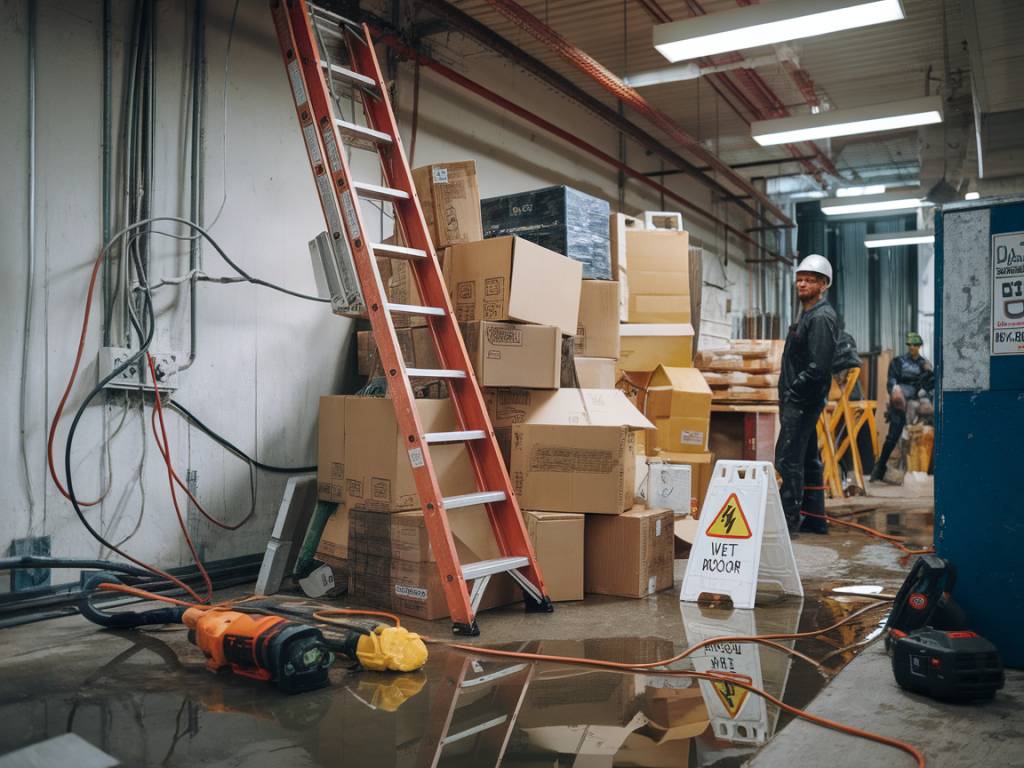In the bustling world of work, it’s easy to get swept up in the daily grind. Yet, beneath every productive task lies a vital responsibility: managing workplace hazards. These hazards lurk like mischievous elves, waiting to trip us up when we least expect it. But fear not, dear reader, for we are about to embark on a journey through the best practices of hazard management, turning potential pitfalls into stepping stones of safety!
Understanding Workplace Hazards
Before diving into solutions, let’s first demystify what a workplace hazard actually is. Simply put, a hazard is any source of potential damage, harm, or adverse health effects on something or someone. In the workplace, hazards can be physical, chemical, biological, ergonomic, or psychosocial. Think of them as the cast of an intricate play, each with its unique role and potential impact.
Identifying Hazards: The First Step to Safety
A journey of a thousand miles begins with a single step, and the same goes for managing hazards—identification is key. But how do you spot these crafty critters? Well, it starts with observation and consultation. Walk the floor, engage with employees, and review incident reports. Here are some tips to get you started:
- Conduct regular walk-throughs and inspections.
- Encourage open communication with employees about hazards.
- Analyze past incident and accident reports.
- Use checklists and worksheets to systematically identify potential risks.
Remember, much like an avid birder spotting a rare species, the more eyes you have on the lookout, the better!
Evaluating Risks: Weighing the Consequences
Once hazards are identified, it’s time to evaluate the risks associated with them. This is akin to assessing the weather forecast before stepping out without an umbrella. The goal is to determine both the likelihood of the hazard occurring and the severity of its potential impact.
Ask yourself: What can go wrong? How likely is it to happen? What would the consequences be? This reflective practice aids in prioritizing which hazards need immediate attention and offers a roadmap for the next steps.
Implementing Control Measures
Picture this: you’ve identified the hazards, and you’ve evaluated the risks. What’s next? Implementing control measures—your ultimate hazard-busting toolkit. Let’s break it down:
- Elimination: The best way to eliminate a hazard is to remove it entirely. Can the hazardous process be redesigned? If so, say goodbye to the risk!
- Substitution: If elimination isn’t feasible, substituting the hazard for something less risky is the next best step.
- Engineering Controls: Utilize equipment or changes in workflow to reduce exposure, like installing ventilation systems or ergonomic furniture.
- Administrative Controls: Implement training, policies, and procedures that require employees to maintain safe practices.
- Personal Protective Equipment (PPE): When all else fails, provide employees with PPE to minimize risks, such as gloves, masks, or protective eyewear.
Always remember, prevention beats cure. Be proactive, not reactive!
Monitoring and Reviewing: Keep the Cycle Going
Managing workplace hazards isn’t a one-time project—it’s a continuous cycle. Regular monitoring and reviewing ensure that safety measures remain effective and up-to-date.
Create a feedback loop with employees to gain insight from those on the frontline, review any new processes or equipment, and never shy away from tweaking control measures. A safe workplace is a dynamic one!
The Human Element: Engaging Your Team
Behind every effective hazard management system is a team that’s engaged and invested. Encourage a culture of safety by acknowledging proactive behaviors, offering regular training, and creating an environment where employees feel comfortable voicing concerns. After all, safety is a team sport, and your best line of defense is an informed and empowered workforce.
A Word from the Workplace
Let’s wrap up with an anecdote—from my own safety adventures. In a manufacturing plant, a particularly cumbersome piece of machinery was frequently causing minor injuries. The culprit? A balky lever positioning mechanism. Rather than resorting to extensive engineering solutions immediately, the team cleverly substituted the lever with a newer, easy-to-handle model. This swift substitution drastically reduced injuries and gave everyone a newfound appreciation for hazard substitution!
Embrace these practical steps and stories as you forge ahead in creating a secure and healthy working environment. By identifying, assessing, controlling, and continuously evaluating workplace hazards, you’ll not only be safeguarding your most valuable assets—your employees—but also fostering a culture of safety where everyone thrives. And who knows, you might even enjoy the journey!

